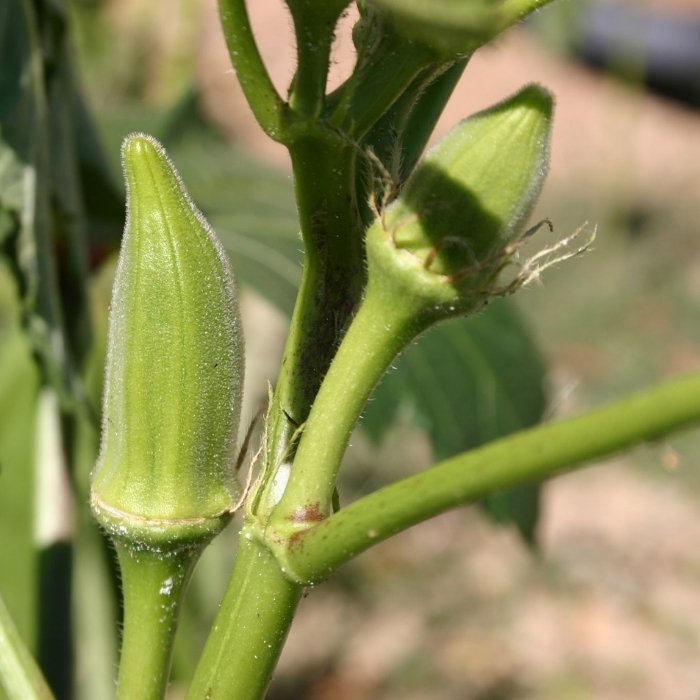How to Plant Okra Seeds for a Bountiful Harvest
Okra, often referred to as “lady’s finger,” is a heat-loving vegetable prized for its edible seed pods. Growing okra from seeds is straightforward, provided you follow the correct steps. In this guide, we’ll walk you through everything you need to know to plant okra seeds and ensure a healthy, productive crop.
Why Grow Okra in Your Garden?
Okra is not only easy to grow but also offers numerous benefits. It thrives in warm climates, produces nutrient-rich pods, and enhances your garden with its lush, tropical appearance. Additionally, okra is packed with vitamins A, C, and K, as well as dietary fiber, making it a healthy addition to your meals.
Choosing the Right Okra Variety
Before planting, select the okra variety that best suits your growing conditions and culinary preferences. Popular varieties include:
- Clemson Spineless: A standard variety with tender, spineless pods.
- Emerald: Known for its smooth, dark green pods.
- Red Burgundy: Adds a vibrant red color to your garden and meals.
- Baby Bubba: Ideal for small spaces and container gardening.
Optimal Growing Conditions for Okra
To ensure the best growth, provide okra with the following conditions:
- Sunlight: Full sun with at least 6-8 hours daily.
- Soil Type: Well-drained, loamy soil with a pH between 6.0 and 7.0.
- Temperature: Warm weather, with daytime temperatures consistently above 70°F (21°C).
Preparing the Soil for Planting
Healthy soil is the foundation of successful okra cultivation. Follow these steps:
- Clear and Loosen the Soil: Remove weeds and loosen the soil to a depth of 12 inches.
- Add Organic Matter: Incorporate well-rotted compost or aged manure to enrich the soil.
- Test and Adjust pH: Use a soil testing kit and amend with lime or sulfur to reach the ideal pH range.
How to Plant Okra Seeds
Step 1: Soak the Seeds
Okra seeds have a tough outer coating, which can delay germination. Soak the seeds in warm water for 12-24 hours before planting to soften the shell and improve germination rates.
Step 2: Determine Planting Time
Plant okra seeds after the last frost when the soil temperature is consistently above 65°F (18°C). For most regions, this occurs in late spring or early summer.
Step 3: Sow the Seeds
- Spacing: Plant seeds ½ to 1 inch deep and space them 12-18 inches apart in rows that are 3 feet apart.
- Watering: Water the seeds immediately after planting to ensure good soil-to-seed contact.
Caring for Okra Plants
Once your okra seeds germinate, follow these care tips to promote healthy growth:
1. Watering
- Water deeply but infrequently to encourage deep root development.
- Maintain consistent moisture, especially during flowering and pod formation.
2. Fertilization
- Apply a balanced fertilizer (10-10-10) after plants reach 6 inches tall.
- Avoid over-fertilizing, as this can lead to excessive foliage growth at the expense of pod production.
3. Weeding
- Regularly remove weeds to minimize competition for nutrients.
- Use mulch around the plants to suppress weeds and retain soil moisture.
4. Pest and Disease Management
- Inspect plants regularly for pests such as aphids, flea beetles, and stink bugs.
- Use organic pest control methods like neem oil or insecticidal soap if infestations occur.
Harvesting Okra
Okra pods are ready to harvest 50-65 days after planting. Follow these tips for harvesting:
- Timing: Harvest pods when they are 2-4 inches long for the best flavor and texture.
- Frequency: Check plants daily, as pods grow quickly and can become tough if left on the plant too long.
- Tools: Use pruning shears or a sharp knife to avoid damaging the plant.
Tips for Maximizing Your Okra Yield
- Succession Planting: Stagger planting every 2-3 weeks to ensure a continuous harvest.
- Companion Planting: Grow okra alongside vegetables like peppers, tomatoes, or basil to deter pests and optimize space.
- Pruning: Remove lower leaves to improve air circulation and reduce disease risk.
Storing and Using Okra
Freshly harvested okra can be used in a variety of dishes, from soups and stews to stir-fries and fried snacks. For longer storage:
- Refrigeration: Store unwashed pods in a perforated plastic bag in the crisper drawer for up to a week.
- Freezing: Blanch pods for 3-4 minutes, then freeze them for up to a year.
Growing okra from seeds is a rewarding experience that provides fresh, nutritious produce throughout the growing season. With proper planning, care, and harvesting techniques, you’ll enjoy a bountiful crop that enhances your garden and table. Garden Beds: Design, Build, and Maintain The Ultimate Guide

